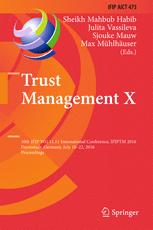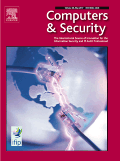Risk-based access control systems are a new element in access control categories, incorporating risk analysis as part of the inputs to consider when taking an authorization decision. A risk analysis over a resource leads generally to temporal allocation of the resource in a risk level (e.g. high, medium, low). Ideally, for each risk level and kind of resource, the access control system should take an authorization decision (expressed like a permit or deny) and the system administrator should also trigger specific counter-measures to protect resources according to their risk level. In a small access control system with few resources it is possible for an administrator to follow the risk level changes and react promptly with counter-measures; but in medium/large access control systems it is almost unfeasible to react in a customized way to thousands of risk level emergencies asking for attention. In this paper we propose the adoption of dynamic counter-measures (which can be integrated within access control policies) changing along time to face variations in the risk level of every resource, bringing two main benefits, namely: (i) a suitable resource protection according to the risk level (not under or over estimated) and (ii) an access control system granting/denying access depending on the fulfillment of a set of security controls applicable in an authorization access request. To define the most appropriate set of counter-measures applicable for a specific situation we define a method based on genetic algorithms, which allows to find a solution in a reasonable time frame satisfying different required conditions. Finally, the conducted experiments show the applicability of our proposal in a real scenario.
Dynamic counter-measures for risk-based access control systems: an evolutive approach
Abstract
Related Publications

I don't Trust ICT: Research challenges in Cyber Security
Conference
10th IFIP WG 11.11 International Conference on Trust Management (IFIPTM 2016), IFIP AICT 473, pp. 129-136, ISBN: 978-3-319-41353-2, Darmstadt, Germany
Publication year: 2016
Co-Authors
This work would not have been possible without the inestimable contribution of:
- Daniel O. Díaz López
- Ginés Dólera Tormo
- Gregorio Martínez Pérez
Citation
Daniel O. Díaz López, Ginés Dólera Tormo, Félix Gómez Mármol, Gregorio Martínez Pérez, «Dynamic counter-measures for risk-based access control systems: an evolutive approach«, Future Generation Computer Systems, Special Issue on Trust, Security and Privacy in Distributed Systems, vol. 55, pp. 321-335, 2016
Journal Ranking & Impact Factor
- Journal: Future Generation Computer Systems
- Category: Computer Science, Theory & Methods
- Rank: 10/104
- Quartile: Q1
- Impact Factor: 3.997





